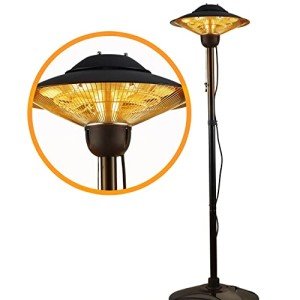What's The Job Market For Propane Patio Gas Professionals Like?
페이지 정보

본문
How to Make Your Propane Patio Gas Less of an Eyesore
Propane patio heaters provide an efficient solution for outdoor heating. They are easy to use and do not require a gas supply as do gas heaters.
 Sometimes known as calor gas patio heater patio gas, the fuel is stored in green cylinders and is perfect for BBQ's and outdoor heating appliances. It can be used with a 27mm clip on regulator.
Sometimes known as calor gas patio heater patio gas, the fuel is stored in green cylinders and is perfect for BBQ's and outdoor heating appliances. It can be used with a 27mm clip on regulator.
Safety
Propane is a highly explosive gas, could pose an immediate danger to the safety of those who are not stored and used properly. Propane is an oil-based byproduct. It should be stored in cylinders or tanks that have a pressure regulator and leak-proof seals. A propane patio heater equipped with a pilot that is connected to the gas bottle by a regulator is designed to ensure safe operation. However, there are times when a problem can occur. It is important to follow certain safety precautions until a professional is able to determine the issue and fix it.
The first step is to look for signs of a leak. It could be the smell of rotten eggs or sprays of skunk or a loud noise close to your tank and an unpleasant burning smell. If you notice any of these signs, turn off the valve in your tank and get out of the area immediately. Contact 911 and your local fire department. Contact your propane retailer to make a report about the issue.
Next, look at your propane tank and the connections to it for any rust or corrosion that could lead to a leak. Verify that the hose connections aren't damaged and secure. Also, clean out the vents for vapors to remove any debris. A weak connection or a crack in the tank can lead to the leak of propane, which is very dangerous.
Finally, it is important to have your propane appliances, such as the patio heaters, checked on a regular basis. A propane technician can examine the connections and hoses to look for damage, leaks or other issues that could increase the chance of fire or leakage.
One final point to be aware of regarding propane patio heaters is that you should never attempt to ignite the pilot light after it has been shut off. This can be extremely risky, especially if there is a problem with the thermocouple or any other safety component that prevents the pilot from lighting. In these instances it is recommended to switch off the pilot light and contact a propane technician to come to your house to look into the issue.
Storage
Propane patio is an efficient and versatile heating option for any outdoor space. The large propane tanks can be a nuisance and aren't always a good fit with a backyard or yard. Luckily, there are plenty of ways to disguise a propane tank and make it less of a snare in your home.
Planting screening plants around propane tanks is a great method to hide it. A dense and dense bushes such as juniper and photinia are good selections, as they grow quickly and conceal the tank effectively. Planting the screens on all three sides will provide an effective cover while still allowing easy access to the tank to refill and maintain the tank.
Another method for disguising a propane tank is to place it behind a fence. This could be a tall fence, Propane Patio Gas a low wall or even a garden gas patio heater bed. Make sure to have access to the tank for filling and servicing because a locked or fenced-in propane tank could pose a risk.
Some people opt to store their tanks in the ground to ensure that they aren't visible. This could be the best choice if you would like to store your propane tank in a remote location. However, it can make it difficult to service and inspect the tank. Additionally, an underground propane tank may lose pressure as temperatures change, so it is important to be on top of annual maintenance services.
If you are planning to use propane for indoor cooking and portable heaters, it's important to be aware of the different types of propane cylinders available. Patio gas stored in green cylinders uses an on-clip regulator and is suitable for patio gas heaters, while propane stored in blue cylinders has lower boiling points and is more suitable for camping, single burner cooking appliances or commercial heat and power generation.
Propane cylinders need to be connected to the correct regulator to dispense correctly. It is important to not switch between different types of cylinders and the regulator without first swapping it out. This could result in the propane gas smelling like rotten eggs or skunk spray as well not being able to use in the appliance you have chosen to use it.
Bottles
LPG gas bottles are a common sight for the majority of us, whether off to the pub for barbeque, cooking in the caravan or simply heating our homes with a fireplace. Bottled gas comes in a variety of sizes and shapes, based on the type of amazon gas patio heater you need. Most appliances have a regulator that reduces the pressure. The regulators are either clip-on or screw on and this will depend on the type of cylinder you're using.
patio outdoor gas heater gas (propane) propane, that is stored in green cylinders, can be used to heat patios or barbecues. It is compatible with a 27mm clip-on regulator. Patio gas can also be used to power camping equipment or single-burner cookers in touring or static caravans. It is also suitable for use in homes as well as light commercial and home domestic uses like blowtorches. It is available in bottles of up to 13kg in weight and includes gas Trac indicator to easily determine when the gas is running low.
Butane is stored in blue cylinders, and is used to heat caravans or mobile heaters during winter. It is a great choice for those who wish to heat a room or an outdoor area but don't have space for a bulk LPG tank. It is also popular among commercial users who use tools, ovens or forklifts. They are available in bottles up to 47kg.
Both propane and butane are flammable hydrocarbon gasses that are produced by natural gas processing and oil refining and are liquified by pressurisation. Propane has a lower boiling point of -42degC and is therefore suitable for use outdoors in the U.K where temperatures are colder however butane has a higher boiling point so is most commonly used indoors.
The majority of leisure appliances come with regulator valves that lower the pressure inside the cylinder. This reduces the pressure in the black gas patio heater supplied to the appliance. This is done to safeguard your appliance and ensure the security of the gas supply. The type of regulator you require will depend on the bottle you're using. This is why it is important to be aware of what you intend to do with it before you purchase it.
Regulators
Propane regulator valves control the gas's pressure when it is transferred from an empty propane bottle to the propane appliance. A first-stage regulator decreases the initial container's pressure to 10 psi (0.70 bar) and then allows the gas to flow through to a second-stage propane regulator that reduces gas pressure (to approximately 11 inches of water column or WC). A gauge on a propane tank measures the pressure that is controlled by the gas when it leaves the regulator.
Proper installation is vital for safe operation. For any propane installation such as barbecues, outdoor heaters and other appliances, a professional plumber with LP gas should be sought out. They can make sure that the hoses are routed correctly and installed, keeping them away from hazardous materials as well as enclosed spaces like garages.
The type of regulator needed will depend on the usage of the propane tank. For instance restaurants that use high-end appliances may require different equipment than a typical homeowner who uses a propane grill in the summer. If a company decides to purchase propane it will be able to sit with a customer to understand their requirements and then provide the appropriate regulator for each use.
Regulators must be positioned away from direct sunlight in an area that is well ventilated. This will prevent rain, snow and ice from blocking the regulator's vent and stop the gas from flowing through the system. Regulators should also be located in areas that are easily accessed for refilling and maintenance.
Leaking vents are a sign that a propane regulator needs to be replaced. This could indicate that the diaphragm is damaged by a foreign object, or there is a build-up of corrosion in the spring area of the regulator. It is recommended to replace the regulator right away when it starts to leak.
 Propane, Propane patio gas a highly explosive gas, should never be exposed to heat or flames. Propane appliances must also be kept away from any flammable substances and in an open area to help prevent fires and accidents. In addition, if a propane appliance develops an unpleasant odor it's usually a sign of a leak and must be replaced as soon as possible.
Propane, Propane patio gas a highly explosive gas, should never be exposed to heat or flames. Propane appliances must also be kept away from any flammable substances and in an open area to help prevent fires and accidents. In addition, if a propane appliance develops an unpleasant odor it's usually a sign of a leak and must be replaced as soon as possible.
Propane patio heaters provide an efficient solution for outdoor heating. They are easy to use and do not require a gas supply as do gas heaters.
 Sometimes known as calor gas patio heater patio gas, the fuel is stored in green cylinders and is perfect for BBQ's and outdoor heating appliances. It can be used with a 27mm clip on regulator.
Sometimes known as calor gas patio heater patio gas, the fuel is stored in green cylinders and is perfect for BBQ's and outdoor heating appliances. It can be used with a 27mm clip on regulator.Safety
Propane is a highly explosive gas, could pose an immediate danger to the safety of those who are not stored and used properly. Propane is an oil-based byproduct. It should be stored in cylinders or tanks that have a pressure regulator and leak-proof seals. A propane patio heater equipped with a pilot that is connected to the gas bottle by a regulator is designed to ensure safe operation. However, there are times when a problem can occur. It is important to follow certain safety precautions until a professional is able to determine the issue and fix it.
The first step is to look for signs of a leak. It could be the smell of rotten eggs or sprays of skunk or a loud noise close to your tank and an unpleasant burning smell. If you notice any of these signs, turn off the valve in your tank and get out of the area immediately. Contact 911 and your local fire department. Contact your propane retailer to make a report about the issue.
Next, look at your propane tank and the connections to it for any rust or corrosion that could lead to a leak. Verify that the hose connections aren't damaged and secure. Also, clean out the vents for vapors to remove any debris. A weak connection or a crack in the tank can lead to the leak of propane, which is very dangerous.
Finally, it is important to have your propane appliances, such as the patio heaters, checked on a regular basis. A propane technician can examine the connections and hoses to look for damage, leaks or other issues that could increase the chance of fire or leakage.
One final point to be aware of regarding propane patio heaters is that you should never attempt to ignite the pilot light after it has been shut off. This can be extremely risky, especially if there is a problem with the thermocouple or any other safety component that prevents the pilot from lighting. In these instances it is recommended to switch off the pilot light and contact a propane technician to come to your house to look into the issue.
Storage
Propane patio is an efficient and versatile heating option for any outdoor space. The large propane tanks can be a nuisance and aren't always a good fit with a backyard or yard. Luckily, there are plenty of ways to disguise a propane tank and make it less of a snare in your home.
Planting screening plants around propane tanks is a great method to hide it. A dense and dense bushes such as juniper and photinia are good selections, as they grow quickly and conceal the tank effectively. Planting the screens on all three sides will provide an effective cover while still allowing easy access to the tank to refill and maintain the tank.
Another method for disguising a propane tank is to place it behind a fence. This could be a tall fence, Propane Patio Gas a low wall or even a garden gas patio heater bed. Make sure to have access to the tank for filling and servicing because a locked or fenced-in propane tank could pose a risk.
Some people opt to store their tanks in the ground to ensure that they aren't visible. This could be the best choice if you would like to store your propane tank in a remote location. However, it can make it difficult to service and inspect the tank. Additionally, an underground propane tank may lose pressure as temperatures change, so it is important to be on top of annual maintenance services.
If you are planning to use propane for indoor cooking and portable heaters, it's important to be aware of the different types of propane cylinders available. Patio gas stored in green cylinders uses an on-clip regulator and is suitable for patio gas heaters, while propane stored in blue cylinders has lower boiling points and is more suitable for camping, single burner cooking appliances or commercial heat and power generation.
Propane cylinders need to be connected to the correct regulator to dispense correctly. It is important to not switch between different types of cylinders and the regulator without first swapping it out. This could result in the propane gas smelling like rotten eggs or skunk spray as well not being able to use in the appliance you have chosen to use it.
Bottles
LPG gas bottles are a common sight for the majority of us, whether off to the pub for barbeque, cooking in the caravan or simply heating our homes with a fireplace. Bottled gas comes in a variety of sizes and shapes, based on the type of amazon gas patio heater you need. Most appliances have a regulator that reduces the pressure. The regulators are either clip-on or screw on and this will depend on the type of cylinder you're using.
patio outdoor gas heater gas (propane) propane, that is stored in green cylinders, can be used to heat patios or barbecues. It is compatible with a 27mm clip-on regulator. Patio gas can also be used to power camping equipment or single-burner cookers in touring or static caravans. It is also suitable for use in homes as well as light commercial and home domestic uses like blowtorches. It is available in bottles of up to 13kg in weight and includes gas Trac indicator to easily determine when the gas is running low.
Butane is stored in blue cylinders, and is used to heat caravans or mobile heaters during winter. It is a great choice for those who wish to heat a room or an outdoor area but don't have space for a bulk LPG tank. It is also popular among commercial users who use tools, ovens or forklifts. They are available in bottles up to 47kg.
Both propane and butane are flammable hydrocarbon gasses that are produced by natural gas processing and oil refining and are liquified by pressurisation. Propane has a lower boiling point of -42degC and is therefore suitable for use outdoors in the U.K where temperatures are colder however butane has a higher boiling point so is most commonly used indoors.
The majority of leisure appliances come with regulator valves that lower the pressure inside the cylinder. This reduces the pressure in the black gas patio heater supplied to the appliance. This is done to safeguard your appliance and ensure the security of the gas supply. The type of regulator you require will depend on the bottle you're using. This is why it is important to be aware of what you intend to do with it before you purchase it.
Regulators
Propane regulator valves control the gas's pressure when it is transferred from an empty propane bottle to the propane appliance. A first-stage regulator decreases the initial container's pressure to 10 psi (0.70 bar) and then allows the gas to flow through to a second-stage propane regulator that reduces gas pressure (to approximately 11 inches of water column or WC). A gauge on a propane tank measures the pressure that is controlled by the gas when it leaves the regulator.
Proper installation is vital for safe operation. For any propane installation such as barbecues, outdoor heaters and other appliances, a professional plumber with LP gas should be sought out. They can make sure that the hoses are routed correctly and installed, keeping them away from hazardous materials as well as enclosed spaces like garages.
The type of regulator needed will depend on the usage of the propane tank. For instance restaurants that use high-end appliances may require different equipment than a typical homeowner who uses a propane grill in the summer. If a company decides to purchase propane it will be able to sit with a customer to understand their requirements and then provide the appropriate regulator for each use.
Regulators must be positioned away from direct sunlight in an area that is well ventilated. This will prevent rain, snow and ice from blocking the regulator's vent and stop the gas from flowing through the system. Regulators should also be located in areas that are easily accessed for refilling and maintenance.
Leaking vents are a sign that a propane regulator needs to be replaced. This could indicate that the diaphragm is damaged by a foreign object, or there is a build-up of corrosion in the spring area of the regulator. It is recommended to replace the regulator right away when it starts to leak.
 Propane, Propane patio gas a highly explosive gas, should never be exposed to heat or flames. Propane appliances must also be kept away from any flammable substances and in an open area to help prevent fires and accidents. In addition, if a propane appliance develops an unpleasant odor it's usually a sign of a leak and must be replaced as soon as possible.
Propane, Propane patio gas a highly explosive gas, should never be exposed to heat or flames. Propane appliances must also be kept away from any flammable substances and in an open area to help prevent fires and accidents. In addition, if a propane appliance develops an unpleasant odor it's usually a sign of a leak and must be replaced as soon as possible.- 이전글The results Of Failing To Seo Studio Tools Title Generator Free When Launching Your business 25.02.15
- 다음글Kids, Work And Png Into Icon 25.02.15
댓글목록
등록된 댓글이 없습니다.




